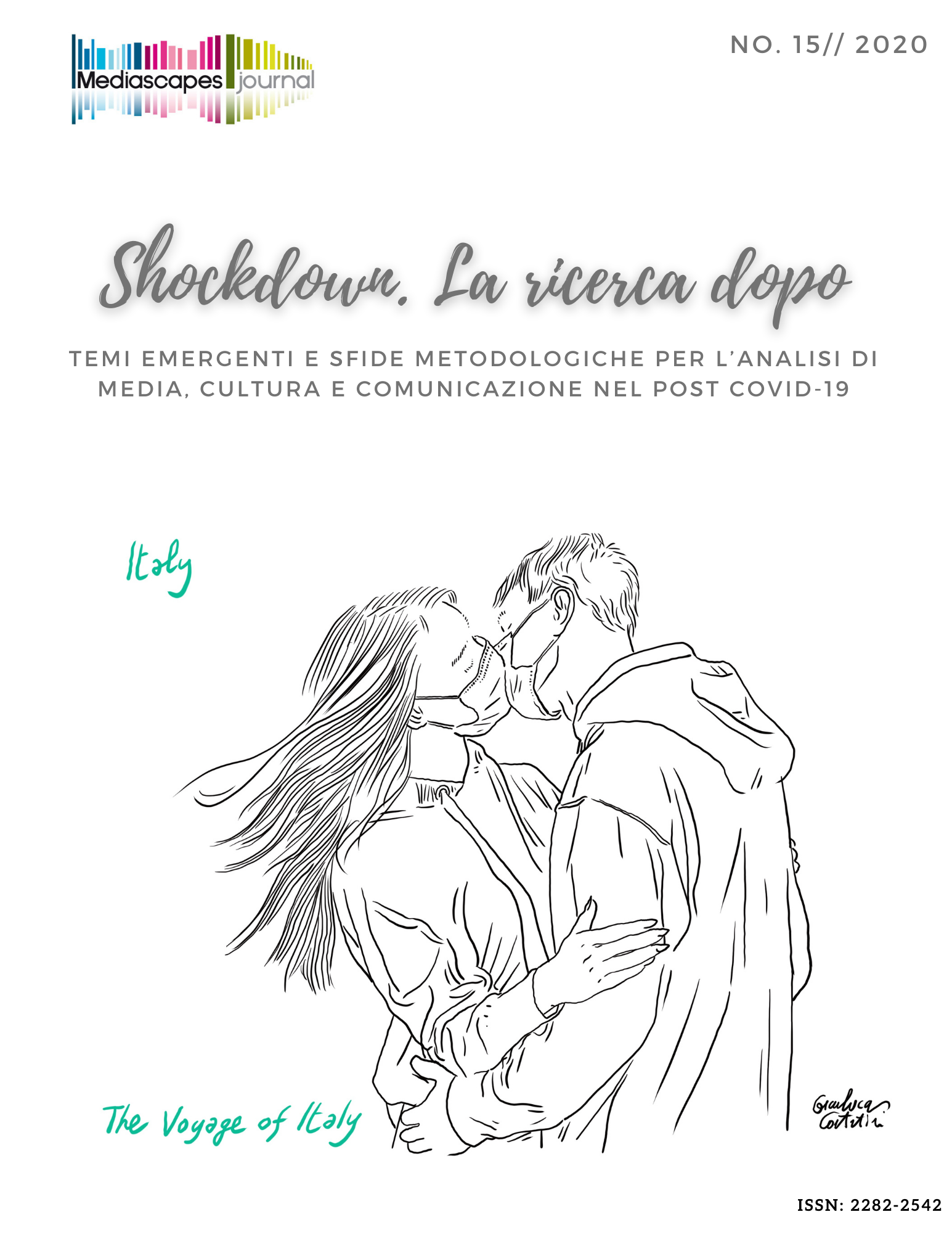Dialogo nel tempo instabile. Lo spazio e l’immaginario, la persona e il conflitto
Keywords:
spazio, tempo, desocializzazione, rischio, conflitto culturaleAbstract
Is culture significantly changing its course? The authors try identifying different change processes that seem to be accentuated in the suspended, multiform and unstable time of pandemic lock-down. Such dynamics make evident and collectively representable some endemic oscillations in our era: between derealisation and physical space perception, between digital devices as super-mediums and networks as infrastructure, between desocialisation and human interdependency consciousness, between "media ceremony" rituals and a dystopian and uncanny imagery, between delegitimisation and re-legitimisation of policy and science competencies. In the background, a theoretical discussion remains on the validity or the impossibility of opposition between the unconstrained "person", considered like flesh, suffering body, and a "subject", seen as a texture of command, control, institutional crystallizations, ultimately as a social language. Different levels of conflict are getting moreand more visible on the media scene, especially the cultural, social, geopolitical and political collisions, being root into the collective imagery and discourse, towards which it is necessary to direct research. Cultural conflicts arise from bureaucratic organizations inability to hybridize with networks, and from an education system brutally projected in the online dimension. Social conflicts particularly concern the labour market, subjected to an enormous stress and transformation between opportunities and dramatic risks. Geopolitical and political conflicts stemming from movements of historical importance embody two opposing ways of capital exiting from the world crisis: financialisation vs investment in infrastructure, research and development, and new welfare and industry forms.
Downloads
Published
How to Cite
Issue
Section
License
Mediascapes Journal is published under a Creative Commons Attribution Licence 4.0.
With the licence CC-BY, authors retain the copyright, allowing anyone to download, reuse, re-print, modify, distribute and/or copy their contribution. The work must be properly attributed to its author. It should be also mentioned that the work has been first published by the journal Anuac.
Having published these contributions for the first time, Mediascapes Journal will have the right to publish them integrally or partially as reprints or possibly as part of a thematic issue, in both digital and printed format.
It is not necessary to ask further permissions both to author or the journal.


